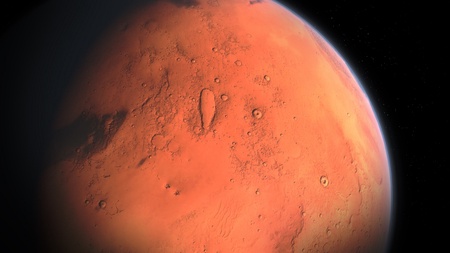An attempt to create liquid water on Mars for the first time has been resurrected after it was confirmed that technology developed at the University of Aberdeen will be included in the next Japanese mission to Mars.
Developed by the University’s Department of Planetary Sciences, the device was due to go on the joint European Space Agency/Russian Space Agency ExoMars 2022 mission but this was paused following Russia’s invasion of Ukraine.
However, funding by the UK Space Agency will now see the HABIT experiment included in a forthcoming Japanese mission – estimated to take place between 2028 and 2032.
Liquid water has never been seen on the surface of Mars. The working scientific theory is that there are unique salts on the planet surface which absorb water from the atmosphere and produce liquid water (in the form of brines) at night when the temperature is lowest.
The HABIT (Habitability: Brine Irradiation and Temperature) instrument will attempt to record this process on Mars for the first time.
It will be loaded with the types of salts known to exist on the surface of Mars allowing the team to monitor if and how the salts absorb moisture from the atmosphere and produce water. It will also investigate the amount of water vapour in the atmosphere, daily and seasonal variations in ground and air temperatures, and the UV radiation environment.
Professor Javier Martin-Torres, Head of the Department of Planetary Sciences, is due to travel to Japan this month where he will present HABIT to UK Space Agency representatives at the Japanese Aerospace Exploration Agency Headquarters in Tokyo, before delivering a briefing on the technology at the International Symposium on Space Technology and Science.
He said: “We are very grateful and excited to have this new opportunity to get HABIT to Mars through the UK Space Agency and the Japanese space programme.
“Although we will need to do some small adaptations to ensure HABIT is suitable to be compatible with the Japanese equipment, this work is minor compared to the years of research and development that have already been done on the device to get us to this stage.
“I previously had the opportunity to work on a different instrument, the Rover Environmental Monitoring Station (REMS), which is currently on NASA’s Curiosity Rover. It’s a nice feeling to see the pictures of REMS on Mars and to be able to say that I once had that device in my hands.
“Assuming the mission goes ahead as planned, HABIT will become the first ever European in-situ resource utilisation (ISRU) instrument to be deployed on the surface of another planet.
“We are very fortunate and excited to have this opportunity, but more excited by the possibility of answering some age-old questions about the existence of water and life on Mars.”


